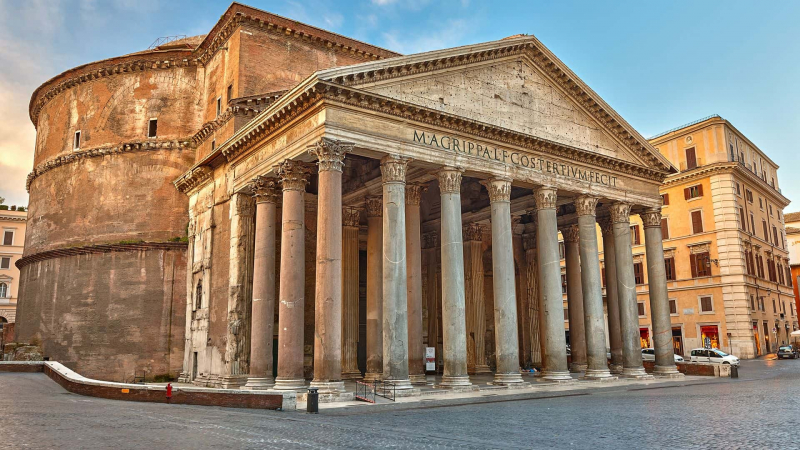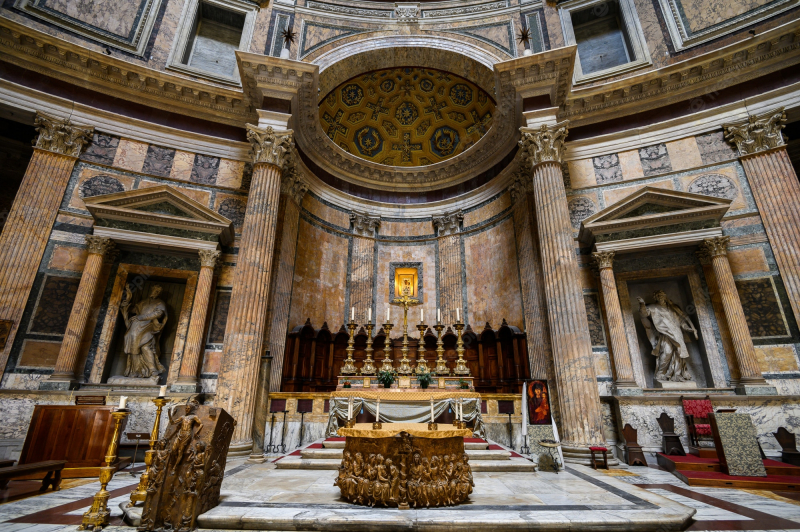Pantheon
Originally constructed as a Roman temple, the Pantheon, the temple of all gods, has been a Roman Catholic cathedral since 609 AD. St. Mary and the Martyrs are honored in the current Pantheon, which has been converted to a church. It is the oldest still-standing domed structure and has an interior circle with a diameter of and a 142-foot oculus and one of the most exemplary structures of ancient Roman of architecture as well. The Pantheon dome is currently the largest unreinforced concrete dome in the world. It is incredible that Pantheon can make such claims considering that it was founded approximately 2000 years ago. Roman architecture was distinctive in that it featured big circular domed cells with a typical temple portico front. However, when classical styles were restored, it became a standard example and was frequently imitated by subsequent architects.
The cylinder-shaped structure has a portico with eight huge granite Corinthian columns in the top tier and two sets of four columns behind, all arranged under a pediment. The rotunda, which has a central opening (oculus) to the sky and is covered by a coffered concrete dome, is connected to the porch by a rectangular vestibule. The Pantheon's dome continues to be the biggest unreinforced concrete dome in the world, nearly two thousand years after it was constructed. The Pantheon is a public building that is overseen by the Polo Museale del Lazio, a division of Italy's Ministry of Cultural Heritage and Activities and Tourism. It received almost 6 million visitors in 2013.












